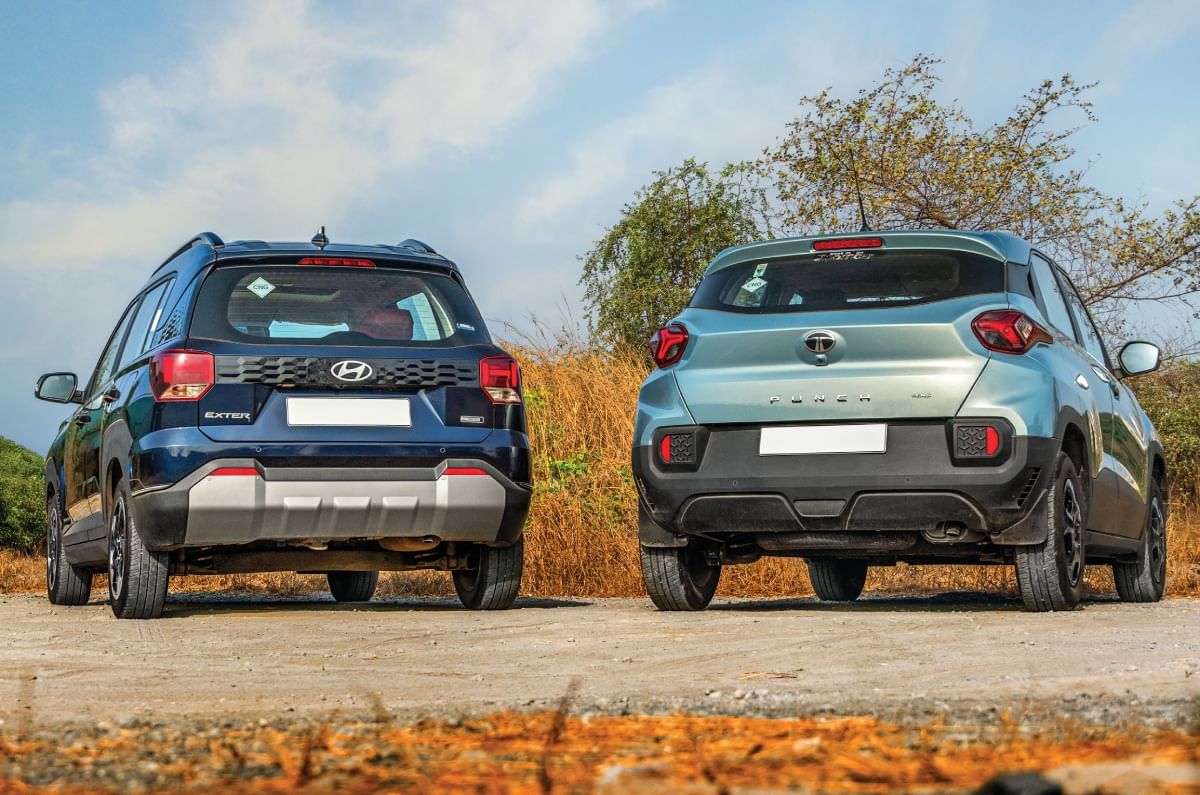
Both sub -compact SUVs, Exters and Panchs, come with a double cylinder CNG setup, and a 27 km/kg of Eri Economy Figure has been claimed.
Only two subsequent SUVs with a factory-fit CNG kit, Tata punch CNG and Hyundai Exter CNG is natural rival. Both come with a 1.2-liter engine, a dual cylinder CNG kit and 5-speed manual gearbox, and their top-spike versions are close to each other-Rs 10 lakh for ICNG and Rs 9.53 lakh for Extercade Hy-Cing Duo SX technology. While the figures of 26.99 km/kg and 27.1 km/kg for the Panch CNG and Extercade CNG respectively are close to the figures, we find out if the real-world economy matches.
- Panch CNG has a 74hp engine and weighs 1,181kg
- Axter CNG packs a 69hp engine and weighs 1,093kg
- Both real world mileage figures are close to ARAI number
Hyundai Exter CNG vs Tata Panch CNG Real World Economy Results
Panch CNG is more powerful, but exterter CNG lose weight
The External CNG has a 1.2-liter 4-cylinder engine that produces 69hp and 95Nm torque on CNG and comes with a 5-speed manual as standard. It weighs 1,093kg, which is 88 kg less than the punch CNG, which tips the scales at 1,181kg. However, the Tata SUV has a more powerful engine-a 1.2-liter 3-cylinder unit that makes 74hp and 103Nm torque. As mentioned earlier, a 5-speed manual punch is also standard on CNG.
External CNG is higher than the average punch CNG of the real world
In our city fuel efficiency tests, Hyundai returned 22.8 km/kg Due to its better instability, Tata is much higher than 20.7 km/kg. On the other hand, the engine of the Exter is 300rpm higher than the punch (3,300rpm) hovering at 100kph in the top gear. Therefore, in our highway tests, Panch CNG delivers More than 30.3 km/kg of 31 km/kg exter.
Given that the Extercade CNG posts the average real -world efficiency figure of 26.55 km/kg, while the punch CNG saves 25.85 km/kg, Hyundai is more efficient to the two CNG subsequent SUVs. One should note that the real -world figures of both models are quite close to their claimed ARAI numbers.
Autocar India’s fuel efficiency test
CNG tanks are difficult to fill, and there are many variables, especially ambient temperature and pump pressure. Therefore, we did not choose the option of our standard tank-to-tank functioning. For our real -world testing, we emptied their CNG tank and filled each of them with 2 kg of CNG. Then, we drove them inside the urban until they ran out of the gas. We reiterated the process for highway testing. During the drive, these cars were operated only in CNG mode.
Tire pressure was maintained based on the recommendation of the manufacturer. These cars were operated on and on the fixed city and highway loops in and around Navi Mumbai, maintaining some average speed. During the tests, each car had only one person who drove the aircraft and other electricals, such as the audio system, indicators and wipers, when necessary – like a regular user. The periodic driver driver swaps further variety in the driver pattern. We are proud of our test data, which is not only consistent, but also gives users an accurate indication of what they can expect in the real world.
See also:
Tata Nexon CNG vs Maruti Brezza CNG Comparison of Real World Efficiency